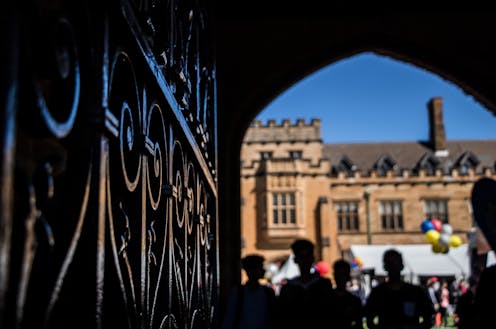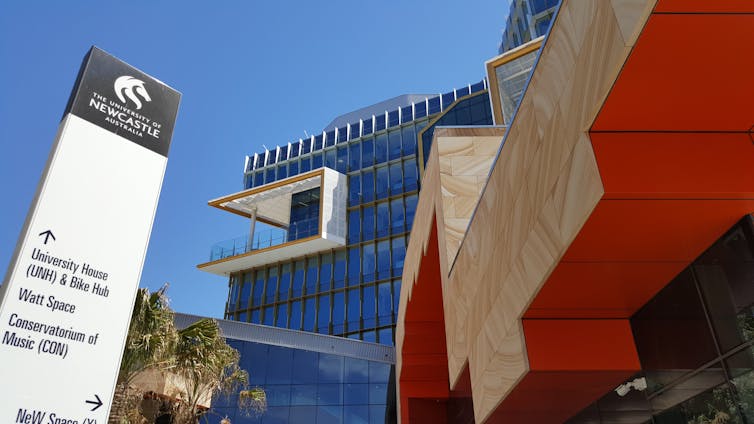
After months of speculation, the federal government has announced what the cap will be for international students in Australia.
In 2025, the number of international students starting a course will be set at 270,000. This includes both higher education and vocational education courses.
This still requires parliamentary approval. The Senate needs to pass legislation to allow the government to set enforceable enrolment caps.
The government has jumped ahead of its legal authority here because the process of recruiting and enrolling international students for next year is already well underway. Education providers need to know how many students they can take.
With the caps coming on top of major changes to visa and migration rules for international students – there have been nine over the past year – the cumulative consequences are hard to predict.
While caps will force some universities to reject students they would otherwise have enrolled, other universities may not be able to fully use their international student quota.
Which students are capped?
The government says the overall cap – which it calls a “national planning level” – will bring new student numbers “back to pre-pandemic levels”. However not all student categories are capped.
As previously announced, school students, postgraduate research students, some English language students, and students in “non-award courses” (a category that includes exchange students), will not be counted towards the cap.
We also have some new exemptions. These include students with Australian government or “key partner” foreign government scholarships, students who are part of “twinning” arrangements (where they do some of their course offshore and then come to Australia), and students from the Pacific and Timor-Leste.
In 2025 only new international student commencements will be capped. A student will be considered “new” the first time they start at each education provider. If they start another course at the same provider they will not be counted as new. In 2026 and in later years, the government will have the power to cap all students.
Unfortunately, accurate comparisons between the 2025 caps and previous enrolments are not possible using publicly available data. The definition of a “new” student is different and there is no published data on foreign scholarship holders or students who start at offshore campuses before coming to Australia.
What does it mean for unis?
The government says public universities will have a combined cap of around 145,000 new international students.
The caps have been calculated with 2019 pre-pandemic enrolments at each public university as their base. For universities who increased their enrolments of international students between 2019 and 2023 a formula applies, depending on their “international concentration”. This is based on the percentage of their enrolments in Australian campuses who are international students.
Universities with low concentrations of international student can have all their growth to 2023 included in their 2025 cap. However universities with concentrations above 37% will get to keep only 50% of their growth.
This is likely to affect the more prestigious universities the most. This includes Group of Eight universities, such as the University of Sydney, the University of Melbourne, the University of Queensland and the Australian National University. They will have to cut their commencing student intakes in 2025 compared with 2023 and 2024.
Private universities and non-university higher education providers, which are mostly small specialist colleges, will only have around 30,000 new international students between them.
What about vocational education?
The vocational education sector, which includes TAFEs, will have an overall cap of 95,000 new commencing international students.
The government says vocational education providers with a “higher ratio of international students” will receive lower allocations to encourage them to diversify.
This will have a significant impact on vocational colleges that primarily serve the international student market.
Will the caps be reached?
What the government has announced for caps – which allows for some growth since 2019 and a longer list of exemptions – could be seen by some in the public university sector as better than their worst-case scenarios.
Despite this, the number of new international students in 2025 could easily be much lower than 270,000.

Migration policy change
As I have previously explained, between late 2023 and July 1 2024, the government implemented nine migration changes that made Australia less attractive to international students. A tenth change expected later this year will make permanent migration more difficult for international students.
By June 2024 these changes had already severely affected offshore demand for vocational education. Demand for higher education still looked normal as of June 2024, but this was before the non-refundable visa application fee more than doubled to A$1,600.
On the positive side, the government says if its capping legislation passes the Senate it will reverse one of the nine changes – a ministerial direction on visa processing priorities. This has seriously disadvantaged less prestigious universities and other education providers through slower visa processing.
Blocking student choice
While fairer visa processing will help some education providers increase their enrolments, capping popular universities below student demand won’t necessarily help other universities in Australia.
Few students who want to attend high-prestige universities or want to live in large cities will go to lower prestige or regional universities instead. They just won’t come to Australia.
At the end of 2025 we are likely to find many universities and other education providers have not reached their cap, pushing the total number of new students well below 270,000.
The Senate will decide
Two days of public hearings for the Senate inquiry into the capping bill raised many concerns about caps. This includes worries the caps will lead to university job cuts. The inquiry will release its report on September 6.
Unfortunately for the international education sector, the Coalition supports the idea of education-provider level caps. If the Coalition and Labor can agree on how to set provider caps, this part of the legislation will pass in some form. So the ongoing debate will just be about the detail of caps in 2025 and beyond.
Correction: an earlier version of this article noted it is likely many providers will not have reached their cap at the end of 2024. This has been changed to 2025.
Andrew Norton works for the Australian National University, which has said that the caps will reduce its international student enrolments.
This article was originally published on The Conversation. Read the original article.







